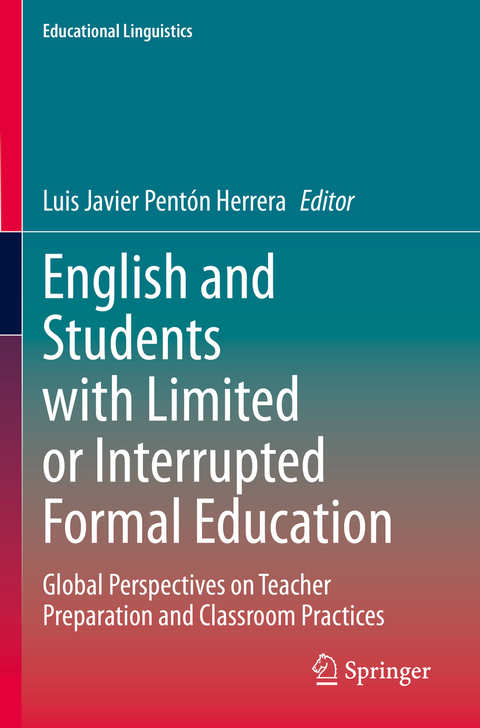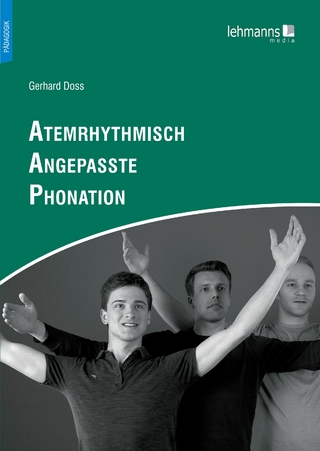
English and Students with Limited or Interrupted Formal Education
Springer International Publishing (Verlag)
978-3-030-86965-6 (ISBN)
This book examines students with limited or interrupted education (SLIFE) in the context of English learners and teacher preparation courses from a cultural and social lens. The book is divided into five parts. Part I frames the conversation and contributions in this edited volume; Part II provides an overview of SLIFE, Part III focuses on teacher preparation programs, Part IV discusses the challenges faced by SLIFE in K-12 learning environments and Part V examines SLIFE in adult learning environments.
This book is unique in that it offers practical instructional tools to educators, thus helping to bridge theory and practice. Moreover, it retains a special focus on K-12 and adult SLIFE and has an inclusive and international perspective, which includes a novel theoretical framework to support the mental, emotional, and instructional needs of LGBTQ+ refugee students.
The book is of interest to teacher educators, in-service and pre-service teachers, Englishliteracy educators, graduate students, tutors, facilitators, instructors, and administrators working in organizations serving SLIFE in K-12 and adult learning environments.
Dr. Luis Javier Pentón Herrera is an award-winning language and literacy educator. In 2018, his doctoral dissertation became the recipient of Association of Literacy Educators and Researchers (ALER)’s 2018 Outstanding Dissertation Award. Dr. Pentón Herrera's recognitions and honors include Emerging Leader in TESOL from TESOL International Association and J. Estill Alexander Future Leader in Literacy Award from ALER. He currently serves as Maryland TESOL’s Past President (2019-2020).
Part I: Setting the Foundation: How We Want to Frame Our Conversations About Students with Limited or Interrupted Formal Education.- Chapter 1. Advancing the Conversation: Humanizing and Problematizing the Conversation About the Students We Call SLIFE (Browder).- Part II: Overview of Students with Limited or Interrupted Formal Education.- Chapter 2. Students with Limited or Interrupted Formal Education in Primary and Secondary Classrooms in the U.S., Australia, Canada, and the UK (Pentón Herrera).- Chapter 3. Adult English Learners with Limited or Interrupted Formal Education in Diverse Learning Settings (Harris).- Why, How, and Where to Advocate for English Learners with Limited or Interrupted Formal Education (Linville).- Chapter 5. Fear not the Trauma Story: A Trauma-informed Perspective to Supporting War-affected Refugees in Schools and Classrooms (Montero).- Part III: Pre- and In-service Teacher Preparation.- Chapter 6. Preparing Pre-Service and In-Service Teachers to Work withStudents with Limited or Interrupted Formal Education (Custodio).- Chapter 7. Making Space for Students with Limited or Interrupted Formal Education in Teacher Education (DeCapua).- Chapter 8. Transforming ESL Pedagogies: A Teacher's Journey from Subject-Centered to Student-Centered Pedagogy When Teaching Print Literacy to SLIFE (Ledger).- Chapter 9. Best Practices in Meeting the Literacy and Postsecondary Needs of Adolescent Students with Limited or Interrupted Formal Education (Colón).- Part IV: Effective Support for Students with Limited or Interrupted Formal Education in K-12 Learning Environments.- Chapter 10. Fostering the Resilience and Cultural Wealth of Students with Limited or Interrupted Formal Education (Casanova).- Chapter 11. Supporting Queer SLIFE Youth: Initial Queer Considerations (Trinh).- Chapter 12. Supporting Elementary-Age ELs with Limited or Interrupted Formal Education: Literacy Events for Families Using Wordless Books (Cruzado-Guerrero).- Chapter 13. The Promise of Problem-Based Service-Learning and SLIFE: Building a Future in the Middle School, High School, and GED Classrooms Today (Aker).- Part V: Effective Support for Students with Limited or Interrupted Formal Education in Adult Learning Environments .- Chapter 14. Our Book: Creating a Scroll-based Curriculum to Serve Adult SLIFE (Frydland).- Chapter 15. The Case for Explicit Instruction for Adult SLIFE (Friedman).- Chapter 16. Toward Participatory Digital Visual Methods (PDVMs) to Support LESLLA Learners: Theoretical and Practical Considerations for Practitioner-Researchers (Lypka).- Chapter 17. Why and How Grammar Matters for Post-puberty Immigrants with Limited Formal Schooling (Mocciaro).- Chapter 18. "We Should Learn English to Solve Our Problems": Strategies to Support Adult ESL Learners with Emergent Literacy (Kidwell).
| Erscheinungsdatum | 28.02.2023 |
|---|---|
| Reihe/Serie | Educational Linguistics |
| Zusatzinfo | XXV, 355 p. 1 illus. |
| Verlagsort | Cham |
| Sprache | englisch |
| Maße | 155 x 235 mm |
| Gewicht | 587 g |
| Themenwelt | Schulbuch / Wörterbuch ► Wörterbuch / Fremdsprachen |
| Geisteswissenschaften ► Sprach- / Literaturwissenschaft ► Sprachwissenschaft | |
| Sozialwissenschaften ► Pädagogik ► Schulpädagogik / Grundschule | |
| Schlagworte | LGBTQ+ refugees and education • Literacy education and second language learning for adults • Literacy support for English learners • Mental health and educational support for refugees • Pre- and in-service educators • Refugees' language and literacy learning • Refugees’ language and literacy learning • Socio-emotional support for refugees in education • Students with limited or interrupted formal education • Students with limited or interrupted formal education (SLIFE) |
| ISBN-10 | 3-030-86965-2 / 3030869652 |
| ISBN-13 | 978-3-030-86965-6 / 9783030869656 |
| Zustand | Neuware |
| Haben Sie eine Frage zum Produkt? |
aus dem Bereich


